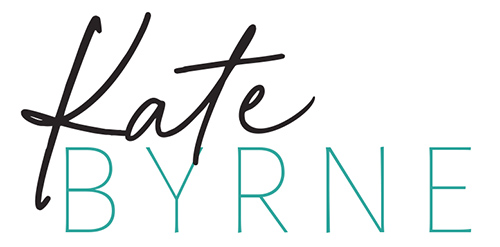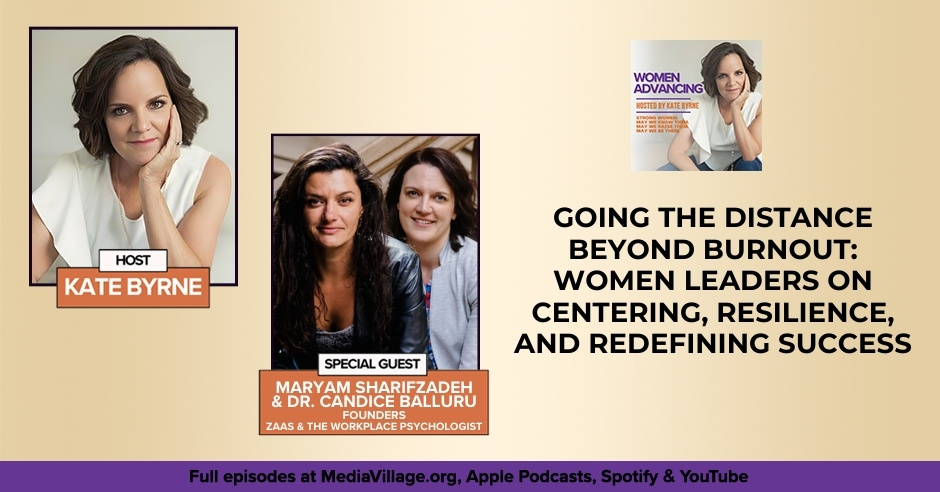
Burnout doesn’t have to be inevitable for high-performing leaders. In this insightful conversation with ZaaS founder Maryam Sharifzadeh and The Workplace Psychologist founder Dr. Candice Balluru, we explore how women leaders can recognize the early signs of burnout, build resilience, and realign their work with their deepest values. Maryam draws on lessons from swimming the English Channel and founding a B Corp wellness company, while Candice brings her experience creating psychologically safe workplaces for organizations without in-house resources. Together they offer actionable strategies—from proactively scheduling rest and diversifying identity beyond work, to embracing imperfect conditions and leveraging AI as a supportive tool—and preview their 2026 Burnout Retreat in Texas, designed to help professionals recenter, strategize, and prevent future burnout cycles.
—
Watch the episode here
Listen to the podcast here
Going The Distance Beyond Burnout: Women Leaders On Centering, Resilience, And Redefining Success With ZaaS Founder Maryam Sharifzadeh And Founder Of The Workplace Psychologist Dr. Candice Balluru
What does it take to build something that lasts, whether it’s a company, a culture, or the stamina to swim for miles in the open water of the English Channel like one of my guests did? In this episode of the show, we’re going to find out. I get to sit down with two women who know a thing or two about endurance resilience, leading with intention, and the burnout we encounter more and more because of such crazy times and ever-shifting sands.
Maryam Sharifzadeh, Founder of the B Corp, ZaaS, and previously mentioned long-distance swimmer, brings the perspective of an entrepreneur who’s building with the impact to mind. Joining her is Candice Balluru, founder of The Workplace Psychologist, who helps leaders and organizations navigate that crazy, messy, very human side of work, trust, culture, burnout, and the psychology of building thriving dreams.
Together, the three of us are going to explore what it means to grow with purpose, battling burnout, how to balance grit with grace, and why building trust, whether it be with stakeholders externally, employees, or, frankly, and most importantly, yourself, may be the most important leadership skill of all. Let me know what you think. Let’s dive in.
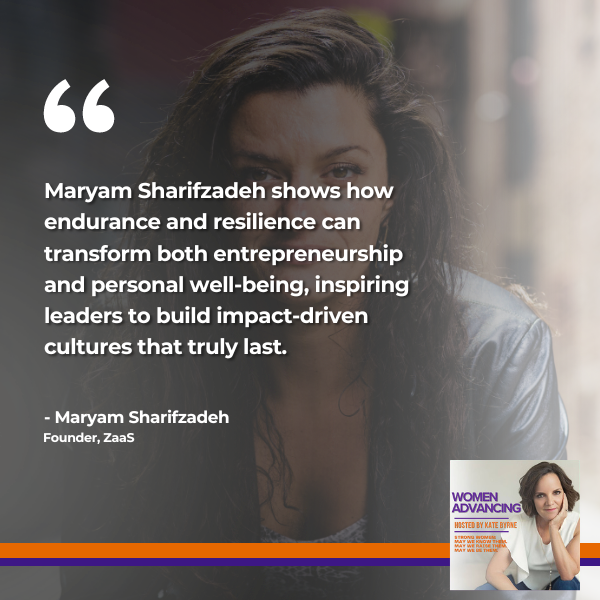
Meet The Resilience Architects
We are in for the biggest treat of all. Why, you might ask? I’m going to tell you. It’s because we have two amazingly powerful and centered individuals who are going to help us get there, at least for this conversation. I’d love to welcome Maryam Sharifzadeh, who’s the Founder of ZaaS, and Dr. Candice Balluru, who’s the Founder of The Workplace Psychologist. Welcome to the show, you two.
Thanks for having us.
It’s my pleasure. A little background. I’ve known Maryam for about 6 or 7-ish years. One of the things that’s interesting is, aside from launching ZaaS, and before that, Office Yoga, which became ZaaS, she is an extraordinary long-distance swimmer. I’ll let her share a little bit about that so she can toot her horn. I always think it’s good when women toot their horns. With that, I’m going to start teasing that out a bit, Maryam. What inspired you to get ZaaS off the ground? How has long-distance swimming shaped your endurance as a founder?
From Grief To Grit: Maryam Sharifzadeh’s Swimming Odyssey
We’re weaving it all together. In business, like open water swimming, there are never perfect conditions. There’s always something that comes up. I started ZaaS because I was a personal trainer and a fitness instructor. Everyone I was working with, whether it was a client or a class, was coming in because they were stressed from work. To me, there was a natural transition of, “If they’re coming to me because they’re stressed from work, why not bring this to work and get to the root of the cause?”
This is me at 25. 25-year-old Maryam goes and starts Office Yoga. Luckily, I was at the right place at the right time. There was a strong need for it. Office Yoga evolved into ZaaS because people needed more than just yoga and meditation. ZaaS does everything with speaker talks, classes, workshops, and burnout retreats. That’s what got me into leading Zest. I started as a yoga teacher and fitness enthusiast. Now, here I am, a business owner. How did I get here? I never meant to do this.
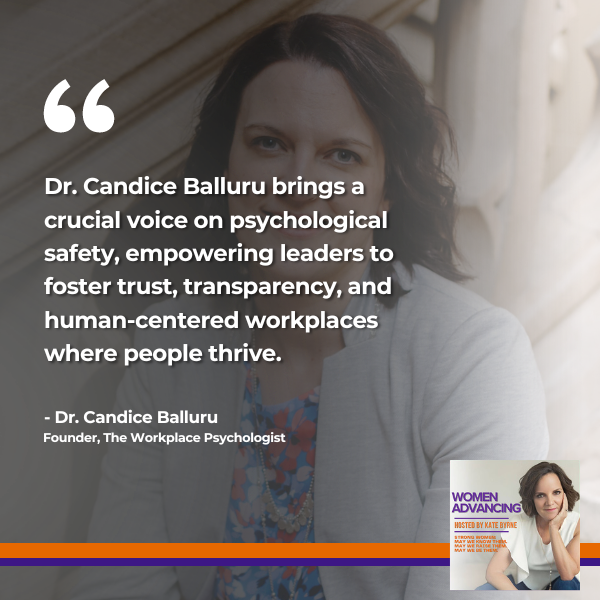
The accidental entrepreneur. How about the swimming?
I was a swimmer at an early age, but I started open water swimming because of grief. I lost my childhood sister in a plane crash. It was a very dramatic plane crash. It was all over the news. We saw it on the news before we confirmed that she was on the plane. Imagine absorbing something that way. It was hard for me to process that.
I was like, “I have two choices. I can go crazy, go off the rails, and let everything fall apart, or I could channel this grief in something that is productive and positive.” She loved Lake Tahoe. I was dabbling in open water at that time, so I thought, “I’m going to swim across Lake Tahoe.” It was, to me at that time, crazy. That’s what started it all in the training. It was an embodiment for her. I’m still grateful to her for that.
That’s lovely. Why don’t you share some of the other waters you have crossed?
One was the English Channel. Thank you very much.
You read that correctly, everybody. All of these waters are freezing.
They’re very cold. The English Channel was a four-year endeavor. That was not an easy one to cross by any means. That was the hardest one I’ve ever done. I’ve also swum around San Francisco and around Manhattan. Any body of water I can, I will jump into it.
In business, just like open water swimming, there are never perfect conditions. There's always something that comes up. Share on XTalk about jumping in deep. Candice, talk a little bit about The Workplace Psychologist and share about it.
The Workplace Psychologist is mostly a consulting firm that I created as a result of my work as a psychologist inside some big-name companies like Meta and Twitter. What I do is work with organizations that want to ensure the health and well-being of their employees. What I realized in working in the luxury of tech is that not everybody can have a psychologist on staff to advise them on certain issues and scenarios that come up. I thought it’d be great to have a consulting firm that works with organizations on how to build policies, how to build programs, and what to do in certain circumstances where we didn’t anticipate a mental health issue coming up. I’m trying to meet my clients where mental health and organizational well-being emerge.
Do you know what’s interesting? It had a little light bulb moment there. It’s interesting to me that a lot of tech companies are the ones that have psychologists or organizational behavior experts. I knew a very renowned one back in the day that Apple had. They probably were early days. That’s interesting. Shockingly, and no offense to everyone reading, you have to admit it’s a little surprising and counterintuitive given the work culture. It’s almost as if it’s like, “We’re going to help develop you and set you up because we’re not going to change our culture. The culture is what the culture is. Suit up, man, woman, they, or them. Grab your paddle and dive in.” Is that how it is?
The Corporate Culture Conundrum: Psychological Safety In Tech
Yeah. It does. A lot of what I learned working on the corporate side is that psychological burnout is such a pervasive problem. The expectation is that when you’re working for one of these companies, you will be working 70 to 80 hours a week sometimes, and that’s the norm. They would pose to me like, “How do we make these employees last longer? How do we keep them happy in these jobs?” After a certain point, and I’ve talked with Maryam about this many times, it’s like, “You all need to look in the mirror and look at what you are doing as a company that can provide an environment of psychological safety, recharging, and being okay with failure.”
We’ll get into that in a little bit. What do you think is the biggest blind spot? Would you say that’s the biggest blind spot that these founders and executives miss? Is that, “It starts with me. I need to be the change the workplace needs.”
I would very much agree with that statement. Companies don’t think about the impact that they have on their own employees, the environments that they create, and the cultures that they create. They believe that if they hire individuals who are strong enough, they can withstand any kind of environment. It doesn’t matter.
Companies don't think about the impact they have on their employees, nor the environments and cultures they create. They believe that if they hire strong enough individuals, they can withstand any environment. Share on XA lot of times, the analogy I give is, “If you were at a pet store back in the day and you were looking at a fish tank, and it had all these goldfish in it, and you saw maybe 1 or 2 floating at the top, you would be like, ‘That’s too bad. They didn’t make it.’ If you saw a whole fish tank that had all of the fish that were floating at the top of the water, you wouldn’t blame the fish. You would say, ‘The water needs to be changed,’ or, ‘Something needs to be switched out.’” It’s not the fish. That’s the same thing that’s happening in organizations where we’re seeing troves of individuals who are suffering from burnout and other types of anxiety. The company is saying, “That’s not our problem. Here’s an EAP. Go use them and figure it out.”
A question for you then. This is a nice lead-in to grit. You both deal with grit in different ways. What does it look like in practice? I’d love to hear how you both see that. How do you cultivate it? How can you grow it as it were?
I would see grit as passion and perseverance for a long-term goal. Kate, we were talking about this before we started recording. We are trying to change the way that we do business. You’ve been in this longer than I have. It feels like we’ve been doing this work for so long, and it’s still so novel. It’s not concrete in anyone’s mind. There’s no real blueprint for it. To me, that’s a long-term goal. That is so important because that’s what’s going to change from the top down and from the bottom up. We need to change the way that we do business in a more holistic way. For me, passion, perseverance, and grit that comes from work is believing in that. That keeps me motivated every day.
Candice, how about you?
For me, and I coach executive leaders on this, too, it is looking at what your recharge plan is on a regular, almost daily basis. A lot of us depend on the week of vacation that’s going to happen in six months. We think we need to make it until that time when we need to be very mindful and curate as much as possible the days that we have for those little moments of recharge, even if it’s five minutes.
If we think of ourselves like a cell phone battery, putting it on the charger for a week doesn't mean it'll last for six months. Batteries don't work like that, and neither do we. Share on XIf we think of ourselves like a cell phone battery, if you put your cell phone on the charger for a week, that doesn’t mean the battery is going to last for six months because you put it on for a week. Batteries don’t work like that, and neither do we. We have to think, “What are those opportunities that I have throughout the day that I could take 5 minutes to enjoy my coffee or take 10 minutes to play with my dog?” Think of restorative practices rather than thinking about, “That vacation is going to make everything better.”
That’s true. What we’re talking about is the presence of doing the simple act of where you are and getting simple enjoyment out of a simple thing that takes you away from what seems seemingly crazy. That can be incredibly refreshing. I know for myself, every once in a while, I will close my eyes, take what I call a SNap or a Short Nap for ten minutes, and then I come back up. It’s amazing how powerful and refreshed you can feel when you do all that. I’ve been working it in. I feel trendy and Doofus-y for doing it. Candice, are you in the Bay Area, too?
I’m in Seattle. We have a very similar culture.
AI’s Double-Edged Sword: Navigating The Future Of Work
I was going to ask about AI because of some of the companies up your way. You knew it was coming. I know everyone’s worried about it taking their jobs, etc., but have you seen things amped up? For instance, in the Bay Area, we’re hearing all sorts of stories about how San Francisco is coming back to life. Yet, I was listening to NPR, and they were doing a huge report where there were some early warning signs that AI is, in fact, taking jobs away from this group of college graduates. We’re about to see more. How is that impacting both of your realms of practice?
In my sphere, especially even in the therapy world, AI and chatbots have gotten a lot of momentum around, “These can be therapists now.” Therapists are freaking out and saying, “Where’s my job, my role?” I encourage people to think about AI not as taking over your job, but more or less being able to take away some of the mind-numbing and difficult tasks that you’re not that thrilled about.
Think about AI not as taking over your job, but more as being able to take away some of the mind-numbing and difficult tasks you're not really thrilled about. Share on XFor therapists, they can do our clinical notes. They can help with touching base with your client when the session isn’t happening and seeing how their homework is going. Think of those kinds of things, rather than thinking, “They’re going to take my job.” AI is a tool. It’s not necessarily a replacement. That would be my biggest suggestion on how to see AI.
Maryam, how about you?
In San Francisco, we’re at the hub and at the start. We’ve had this for a while. I agree with Candice that it’s more of a tool that’ll help people support them and what they do. I don’t think it will take over as many jobs as we think, especially in my world. I am a yoga teacher of movement modality. I’m sorry. AI is not going to take my role. You want another human being to interact with you in that realm. In my world, I feel somewhat AI-protected. If anything, yoga classes are exploding because people are frustrated with the amount of interaction with AI and not enough human connection.
We’re maybe a little bit ahead of everybody else. We’re getting sick of it. We’ve had self-driving cars for years. We want to interact with other humans. There will be a trend, eventually. AI, to me, is novel. It’s new, all these virtual reality worlds. Eventually, interaction like this is going to be novel again. People are going to crave. Maybe that’s years from now, but I don’t see it taking over the way that people are anticipating it to take over.
I agree. To your point also, as Candice says, it can take a bunch of the drudgery away. On the humanistic side, like compassion and empathy, there’s nuance. I don’t care how smart it gets. It won’t pick up on that. All the more reason why it’s so important that we work with the folks in the tech companies. The people who are creating the algorithms need to be sure that they’re getting rest, that they’re not burned out, that they’re not vindictive, that they’re feeling heard, and all those sorts of things.
We need guardrails around ethics to balance that in place.
The problem is that technology is evolving so fast. It’s hard to keep up with it, even if there are pauses where we can say, “Is this the best idea? Should we be allowing AI to be doing “therapy” or letting them call themselves therapists, for example? That’s another one of many problems. To go back for a second, even before AI, technology has been replacing jobs. AI is one part of technology. When I was in high school, I used to work as a photo developer in a one-hour photo lab. Those jobs don’t exist anymore. The key to resilience is being able to constantly reinvent yourself and have multiple interests and options in front of you.
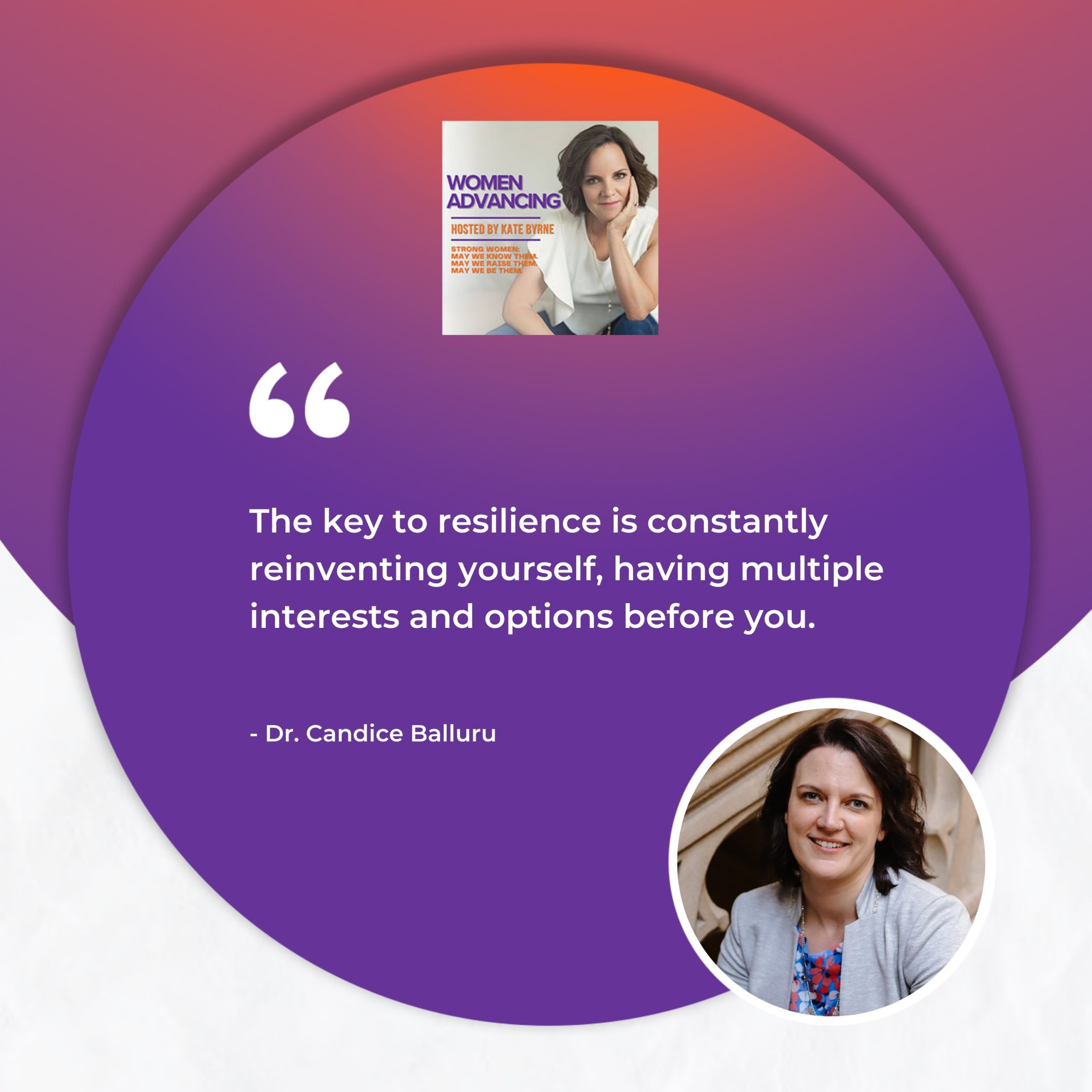
I completely agree. Ironically, it’ll bring out humanity and the hunger for it, which are both of your points. Maryam, I want to ask you. I often reference Steve Jobs and his 2005 commencement speech at Stanford. He talked about how everybody has these times and these ways in their life and their career where there are significant dots.
When you look back at where you are, you’ll realize, “That was my key differentiator.” The rest makes sense. For him, it was taking that calligraphy class because that’s what made the Mac so magical. I have a question. In long-distance swimming, do you tap into that? Do you think that’s part of your special magic fairy dust that you draw upon? I’m thinking about pace, rhythm, mental toughness, or strategy when you’re navigating that whole rollercoaster that is called being in business.
Entrepreneurial Tides: Lessons From Open Water Swimming
That’s a very good question and a complex question. There are a lot of ways I can answer this. What’s so grounding about open water swimming for me, and this ties into the AI conversation we’re having, is that we could be so in our heads about things and be future-tripping about what AI is going to do or anything. We could be very much in our heads.
When you’re in the water, there’s nothing else you’re thinking about but being in the water. Especially here in the San Francisco Bay area, we have wind, cold water, strong currents, and great whites. There’s a lot. When you’re in that world, everything on land feels a lot less dramatic. If I’m swimming against the current and I’m swimming in place, it’s so frustrating, but it reminds me that the tides change every 4 to 6 hours. The tides will change, or you can come back and try another day.
The current always shifts. If I’m on a very long swim, I know that the current is always going to change. It’s very similar to my time doing business. I’ve been in business as an entrepreneur for fourteen years. Sometimes, it feels like I’m swimming with the waters and going with the flow. It feels like everything is easy breezy, and I’m on the same page with the world. There are times when it feels like I’m swimming in place.
It can feel like we're drowning, but the tide's gonna come back. You've just got to be ready to sprint when you have your opportunity. Share on XWellness and employee health are no longer in vogue. We’re not paying attention to the environment anymore. These conscientious efforts and thoughts aren’t prioritized in the way that they have been in the past. It’s very disheartening in the moment, swimming in place, but I have to remind myself, “I’ve been here before, and the tides will shift. This isn’t going anywhere.” We do have to prioritize people and our employees. Whether it’s momentarily that we forget about them, it’s going to come back. There will be a shift where we realize we can’t neglect this.
Candice, how does that fit in with what you see in your world as you’re dropping into these different companies? God help a 4 to 6-hour tide shift, but with tech, to your point, it changes so quickly. How does that land in your realm?
Maryam and I talk about this a lot. Employee well-being isn’t a trend. It’s not the fad. It’s very similar to the economy, where sometimes, we’re in an upswing, and then other times, we’re headed towards a recession. It depends on the current conditions, in this case, of the job market where we might see a swing in the other direction.
It’s about waiting for the right time to jump back in. It’s like doing Double Dutch. Once you find that swing, you can hop back in. It’s about not getting discouraged by the fact that this isn’t a priority because the world is so complicated in how we run businesses and how we see the economy. Everything that’s happening in the United States is chaos.
Numbing at the same time.
It can feel like we’re drowning, but the tide’s going to come back. You have to be ready to make that sprint when you have the opportunity to go for it. That recharge strategy, a lot of times, is going to be your biggest friend, like, “How do I preserve my energy so that when my opportunity becomes available, I’m ready to sprint and make it happen?”
If you are not informing your employees and customers about what is happening, if you're not addressing it, then you're leaving an idle mind to make up stories. You want to control the narrative. Share on XThe Trust Imperative: Leadership Communication In Crisis
In those times of crisis and uncertainty, how do you both think leaders can communicate with integrity, whether it be to a team of stakeholders or even to themselves? Everyone wants transparency, whether it be the various stakeholders within a company, multi-generational companies, or multinational companies. To your point, it is so complicated. Sometimes, is it better not to respond at all?
I don’t see any scenario where it’s better not to respond. If you are not informing your employees or your customers about what is happening, or you’re not addressing it, then that means you’re leaving an idle mind to make up stories. You want to control the narrative. Even if you don’t know the answer, if you’re not sure, it is okay to say that.
There’s probably more of an issue around being vulnerable with your employees or customers, like, “This is an uncertain time. We’re not sure. As soon as we know something, we will tell you all.” That way, you’re not leaving them hanging. It gives your employees the sense that they’re being treated like adults and that they’re being trusted. You also see this common dynamic where employees are almost treated like they’re children or they’re not mature enough to handle what’s happening at the company. It’s like, “Let’s not inform them,” and then the stress that goes up from that.
They need to know. Maryam, how about you?
I agree with Candice on this. It’s a regular cadence of communication. Overcommunicating is always better than not communicating at all. I have to work with our clients on communication strategies in our well-being programs. To me, having a regular cadence of communication that goes out is important. Even if that communication is, “Nothing has changed. We’re still in the same place,” or, “We still don’t know. This is what it is. This is what we’re thinking,” any kind of communication is better than leaving an idle mind to wander.
Over-communicating is always better than not communicating at all. Share on XThis is all about speaking the truth of what is and building trust. Why do we have such a hard time doing that? I don’t understand. Are people afraid of looking weak? We’re not going to get political, but in terms of people looking the other way or not wanting to be looked at as though they don’t know or they’re not in the know. Since we’re dealing with humans, it seems like, from the outside, such duh, easily. If you tell people the truth, they may not always like it, but at least they know where they can move forward from. Why do some leaders have an issue with that, do you think?
I would, first of all, say this is partly due to male-dominated leaders. There is a need to have a more authoritarian presence. That’s tolerated if you are a man versus a woman. We are far more into communicating with what is happening and being that compassionate leader. This is a generalization. It’s not across the board.
I also think you’re seeing this difference with the generations that are transitioning in leadership, where Boomers and maybe a little bit of Gen X are more of that mindset of, “We don’t talk about what’s happening behind the scenes.” They don’t need to know. They don’t want to know. If they know, they can’t handle it, or there’ll be a mutiny. The consequences blow out of proportion. We’re getting closer to Millennial and Gen Z leadership. You’ll see a bigger change as the ranks change.
To the point of gender difference in terms of power or leadership, it seems to me that AI would be a natural partner for women because we have this opportunity to make it a collaborative relationship. Men are good at collaborating, but instinctively, women are more so. It’s what we do.
We have to.
It’s how we roll. It’s how we get stuff done. There’s such an opportunity for women to get more involved, and yet the numbers are somewhat abysmal. To everyone reading, get going. Hop in, seriously. This is a terrific opportunity for us to help shape this next generation of company culture, tech usage, and all sorts of things.
I have a one-and-a-half-year-old son. A new part of learning about what it’s like to be a woman in the workforce has come to life for me. Granted, I knew this before. I worked in benefits, so I understand. The environment for women to be supported in joining company leadership is not where it needs to be. The support for remote work is continuing to go down, and it is driving women away from the workforce who would be amazing leaders. That, for me, has been a big learning experience, especially with having my own child.
Proactive Resilience: Scheduling Breaks To Avoid Burnout
What we’ll have to do is utilize AI, build companies, and then go from there. We set it up and change it that way to turn the tables on everybody. What do each of you do for your source? When you’re feeling burned out or a little drained, what do you turn to to reignite and refuel? What gives you hope?
You want to go, Maryam?
Yeah. I hope I don’t piss anyone off, but I don’t get burned out very often. I will tell you why. It’s because I plan my breaks in advance. I don’t wait to get burned out to take a break. Another thing I’ve learned from marathon training is that I swim hard for five weeks, and then I have a week of rest. I have to give my body and my muscles that time to recoup and rebuild.
I picked up from marathon training that our brains are the same. The way that I work is the same. I’ve done this intuitively. I’ve always taken some breaks, but I’m more scheduled about it. Every 4 to 6 weeks, I’ll either have a weekend or time off. I have regular breaks throughout the week as well. It’s embedded in my work schedule, where I don’t get to that point. Not to say that I don’t have stressful days or stressful moments, but I don’t get to the point of, “I don’t ever want to do this again.” I do maintain that hope. I do maintain that sense of levelheadedness for a duration because I schedule them in advance.
Diversify your identity as much as you can. Share on XCandice, how about you, especially with a little one-and-a-half-year-old?
My key has always been to diversify my identity as much as I can. I am very passionate about what I do. I have a PhD in it. You have to be passionate if you get a doctorate in something. At the same time, passion can be a double-edged sword. I was learning over my corporate career that I was living and breathing it all the time. I never set it down because I loved it so much, but at the same time, it was hurting me. I have a child. That forces me to be in my mom role. I’m learning a language, so I spend time with that. I lean into my other passions, which are music. Diversifying your identity, like you diversify a financial portfolio, is a super big key for me.
The Burnout Breakthrough: A Strategic Retreat For Renewal
Along those lines, one of the things that I believe you’re working on together is a burnout retreat. Talk a little bit about that.
A little while ago, Candice reached out to me. Candice and I met when she was working at Twitter. We were the vendor that she reached out to for office yoga, meditation, and practices. We grew very close in that working environment. We both went through a lot of obstacles together. It was maybe July of 2018 or 2019. It took six months to get the program up and running. Three weeks into it, the pandemic happened. We had one thing after another come our way, but together, we navigated that very well. We grew to appreciate each other’s strengths.
Time went on, and we moved on from Twitter. She reached out and said, “I have this idea of a burnout retreat.” You knew I had led some retreats. I thought she wanted my advice on how to get it going. I was like, “Sure.” She’s like, “Do you want to co-lead one with me?” I was flattered. I was like, “Really?” Candice, you can speak a little bit more to the content, but it’ll be in Marble Falls, Texas, in April 2026.
Marble Falls, Texas, is a great place in the hill country right outside of Austin. It’s at the retreat ranch, which has a great set of horses, outdoors, and a big sky. There’ll be Texas bluebonnets. If you’ve ever seen Texas bluebonnets, they’re peaking that time of year. They’re gorgeous flowers. This is about a combination of helping our participants get centered, take that pause away from their lives, and figure out what is going to be the action plan going back into the real world.
Like vacations, we wait for that time, and then as soon as we get back, the same problems are still there. Instead of taking the vacation, which we’re going to have plenty of downtime, rest time, playing with horses, and things like that, we also want to make sure that we have a strategy coming back into our lives so that we don’t repeat the cycle of burnout again. Our retreat will be week-long. We’re so excited about the different activities, the location, and the people that we’re going to meet on this retreat.
That’s wonderful. With all of this, what has surprised you most about yourselves on this journey? What have you learned about yourself, or what surprised you most about yourself?
Honestly, it is that I still have the capacity to keep going. There was a time when I thought that in being a business owner, you get it up and going, and then once it’s going, you kick your feet up and you’re cruising along. It is not that. It is reinventing yourself and your business, originally, every four years. Now, it feels like every other year. It’s probably going to be more often with the evolution of technology. I feel like I always find a way. It’s the adaptability, grit, and resilience. It’s that passion for that long-term goal. Especially as, hopefully, women and new generations of leaders come through, we think differently about business and how we operate. I want to be a part of that. I want to be here for that.
You will be, clearly. Candice, how about you?
I remember at the beginning of my career, especially when I was even trying to choose a major graduate school, I felt very much that if I didn’t choose the right thing, then my path would be permanent, and I couldn’t undo it. What I’m finding is that the more open I am to trying new things, meeting new people, and pushing myself, the more pathways open. You can have an amazing career without necessarily saying, “If I follow this recipe and do this thing, then everything will be great. I don’t have career goals. I just want to have a good time.” I’m like, “Maryam, let’s go do this retreat. It sounds fun.”
The B Corp Advantage: Building Purpose-Driven Companies
That’s awesome. One thing, too, is that each of you has such a sense of intentionality. Maryam, I know ZaaS is a B Corp, which is no small feat. Let’s face it. Candice, how has that enhanced your business and brought a halo effect of being a B Corp? Candice, how do you see those types of designations impacting workplace culture?
I ask that because we know younger generations have all said this. Frankly, older generations wanted it, too, but we didn’t talk about it. The younger generation at least has the oomph to sit there and say, “I want to work with an entity that is purpose-driven, has values, and walks the talk.” That’s probably why they’re so discouraged, because so few do. With B Corp, is it a yay, impactful, or effective? What do we think?
In my experience of being a B Corp, the biggest value I have is embodying the policies that we have to put in place. What I’ve found is that my retention of the people and the clients that I have is so strong. I have people who come back or don’t ever leave. That’s undervalued in a lot of bigger organizations. They think. They view people as resources or disposable.
For me, not only are the people who work for me so happy to be there, but they also bring in clients. The clients are so happy to be with us because the people who work with us are so happy to be here. It’s a cyclical effect that continues to evolve the business on very few resources, to be honest. It didn’t take much. It’s creating that healthy environment or that clean water for the fish to swim in. It creates this dynamic that it’s enticing and engaging. People want to be around that. That’s the future of business. We want to start working with people and companies that are intentional. The way that they think, act, and behave is in unity.
There’s that positivity. Let’s face it. Positive energy is infectious in a good way. You want that. You want to be around that. Candice, what do you see?
I 100% agree with what Maryam said. Especially this generation, but what we’ve seen in the psychological research with burnout, when there’s a mismatch between your values and the company’s values, it doesn’t last as long. I’ve asked a lot of different workshop participants, “How many of you have worked for a place where you feel like you sold your soul?” Almost everybody raises their hands.
I say, “How long did you last?” For some people, it was 1 month or 3 months. I’ve even heard somebody say fifteen years. I’m like, “That’s a long time.” Our view on work is that we should not be living to work. It should be working to live. Embracing that comes with, “I’m not going to make as much money,” but I work for a place that I like, I agree with, and I can sleep at night.” That is a strong transition we’re going to see with the next generations.
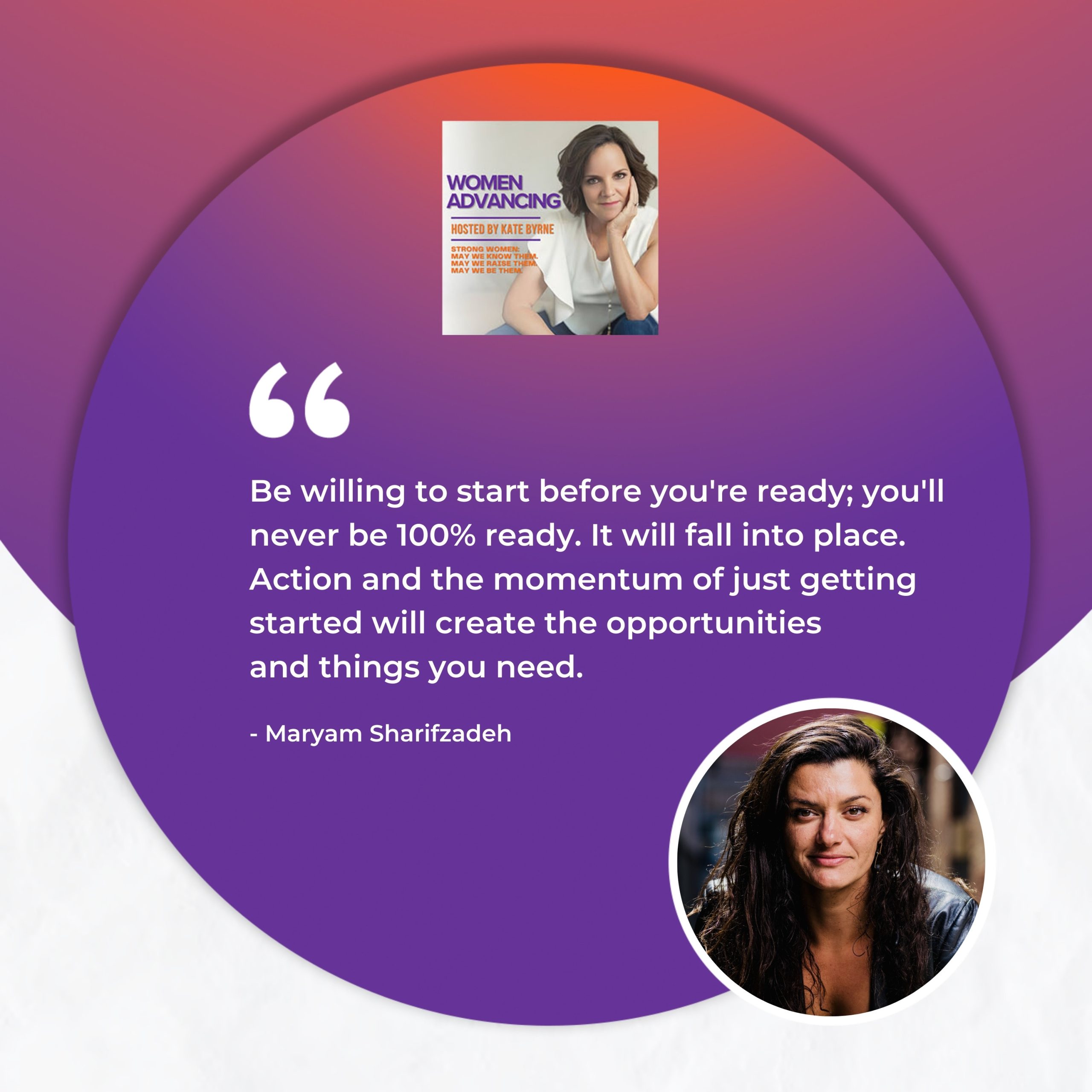
Beyond Imposter Syndrome: Embracing Authentic Leadership
We talk about imposter syndrome. You feel like an imposter because it’s hard to live fake lives. To me, I liken it to half-heartedness and doing everything halfheartedly. That is such a drain on you. It’s one of the hardest things. In the end, that is exactly what selling your soul feels like. It’s not respecting yourself.
You’re seeing it even, too, with boycotts of certain companies for their values or the withdrawal of those values sometimes. It’s like, “I care about where I put my money. I’m not going to give my money to a company that doesn’t value its employees, doesn’t value certain policies, or doesn’t do what they say they’re going to do. With the newer generations, you’re going to see more accountability for that.
I think that’s true. It’s interesting, too. I have a daughter who’s 30. It’s always fascinating when we have conversations because I’ll say a statement and she’ll say, “That’s the thing, Mom. That’s not a thing. It’s something you all held onto. Does it matter to you? If it doesn’t, get rid of it.” She’s right. I’m like, “You’re right. I don’t even know where that came from.” That’s a nice lead-in to my next question. If each of you could give one piece of advice to women leaders coming up behind you, what would it be?
I would say, “Be willing to start before you’re ready.” You’ll never feel 100% ready to take on the endeavor of starting your own business or stepping into that leadership role. If you need an affirmation or a mantra, it is, “I am willing to start before I am ready.” Trust me, it will fall into place. That action and that moment of getting started will create the opportunities and the things that you need to fall into place.
That’s your perfect condition. You’re never going to have perfect water.
That fits into imposter syndrome. I used to think that way, too. It’s like, “I need a degree in this in order to talk about it or to do it.” You don’t. You have to be willing to learn as you go. That’s okay. For women, we have a tendency to feel like we need to be competent in some way to have some kind of validating form. That’s great advice.
Don't be afraid to reach out to other women for advice. Share on XThe other thing I would say is, “Do not be afraid to reach out to other women and ask for advice or mentorship because it’s so impactful.” It’s been impactful for me, and I know it’s been impactful for the people that I’ve mentored. To give a shout-out, I joined the Society of Working Moms. We have a Slack group where we have one channel that’s screaming into a void. We get our own frustrations validated. Having community, especially if you are an entrepreneur and you don’t have a lot of coworkers, is so important to feeling like you can continue moving forward.
Uncharted Waters: The Imperfection In Your Journey
Knowing what you know, what advice would you each give your younger selves? You give advice to others. What would you have said to yourself?
For me, it would have been, “Stop worrying so much about the future. You’re never going to have this part of your career back. Each moment is a gift.” It’s sometimes hard to see it, especially if you’re learning something new and feeling frustrated. Take everything you can take with you. How do you want to put that in your backpack so that you can bring it along with you for that knowledge? I was overly concerned about that right path, like, “I have to be doing things right.” There’s no right or wrong way. If you’re going to be a pioneer, you’re going to create that way.
I think that because of the times we find ourselves in and the sands ever-shifting, we’re completely in uncharted territory. I was trying to explain this to my daughters and saying, “I’m realizing I’ll be able to share some pearls, but take what part works. It may not be because, honestly, we’ve never been through this part before. We’re all going through it together.” That’s, to me, the reciprocity of mentorship and sponsorship. We’re all learning. Maryam, how about you?
Along the same lines, I would probably tell myself, “If it’s not working, let it go.” There are times when I would hold on to something too long, even though maybe I needed to let it go, move along, and evolve. I’ve gotten much better at that. I hold things lightly. I appreciate it when it’s going well. If it’s not, I don’t mind letting it go. I trust in my creativity a little bit more, knowing that I can meet the market where it’s at. If anything, I’m usually ahead of it. I trust that process a little bit more.
I hear you on that. Do you think the reason why we hold on so tight is because we’re stubborn?
I’m going to talk about psychological research. We have a series of biases. One of those biases is the sunk cost fallacy. The more time you put into something, the more you’re willing to keep putting time into it to make sure that it works, even though it would be best if you cut your losses and say, “Not every idea is going to work. That’s okay.” It’s like the same thing with the Jackpot Machine. It’s like, “I’m going to keep putting money in it. It’s going to eventually pay out, right?”
That’s so true.
Some of it, too, can be familiarity if you know something so well. The idea of trying something new for some is very hard to recreate and reinvent oneself. To go back to what you were saying, Kate, about being in unprecedented times, we were saying the same thing during the pandemic. We were like, “We’ve never been through this before. This is uncharted territory.” Here we are again. We’re like, “We’re in uncharted territory.” We navigated that. This is same same, but different. We’ll get through this, too.
Guess what? There’s going to be another uncharted territory headed our way before you know it. Change is the only constant. Embrace and have a light touch. Maryam and Candice, thank you so much. I enjoyed the conversation. I know people are going to go straight and sign up for the fabulous burnout retreat. I might be among them,
We’d be glad to have you.
I appreciate the time, the intentionality, and the depth of conversation. Kudos to you. We’re lucky that both of you are touching so many lives as you are with what you do every day.
Thank you, Kate. It’s an honor to be here. It’s great to see you, as always.
Likewise. Thank you so much, Kate, for the space and the time.
My pleasure. Until next time.
‐‐‐
Countering Burnout: Key Takeaways From Maryam And Candice
Wasn’t that a great conversation? Maryam and Candice shared a number of key points that can help all of us counter burnout. Let’s face it. In these crazy conditions and times, it’s something we’re all facing and having to tolerate. As the old adage goes, change is the only constant. With that in mind, I loved the first point that Maryam had brought up.
She took it away as her open water, long-distance swimming self, having swum across the English Channel, around San Francisco Bay, and throughout Manhattan. That is, you’re never going to have perfect conditions. If you are getting ready to start a company or thinking you might want to try something new, do it. It’s never going to be perfect. There’s always going to be a little something else that could be tweaked, and when the majority of those items align, go for it. Do it.
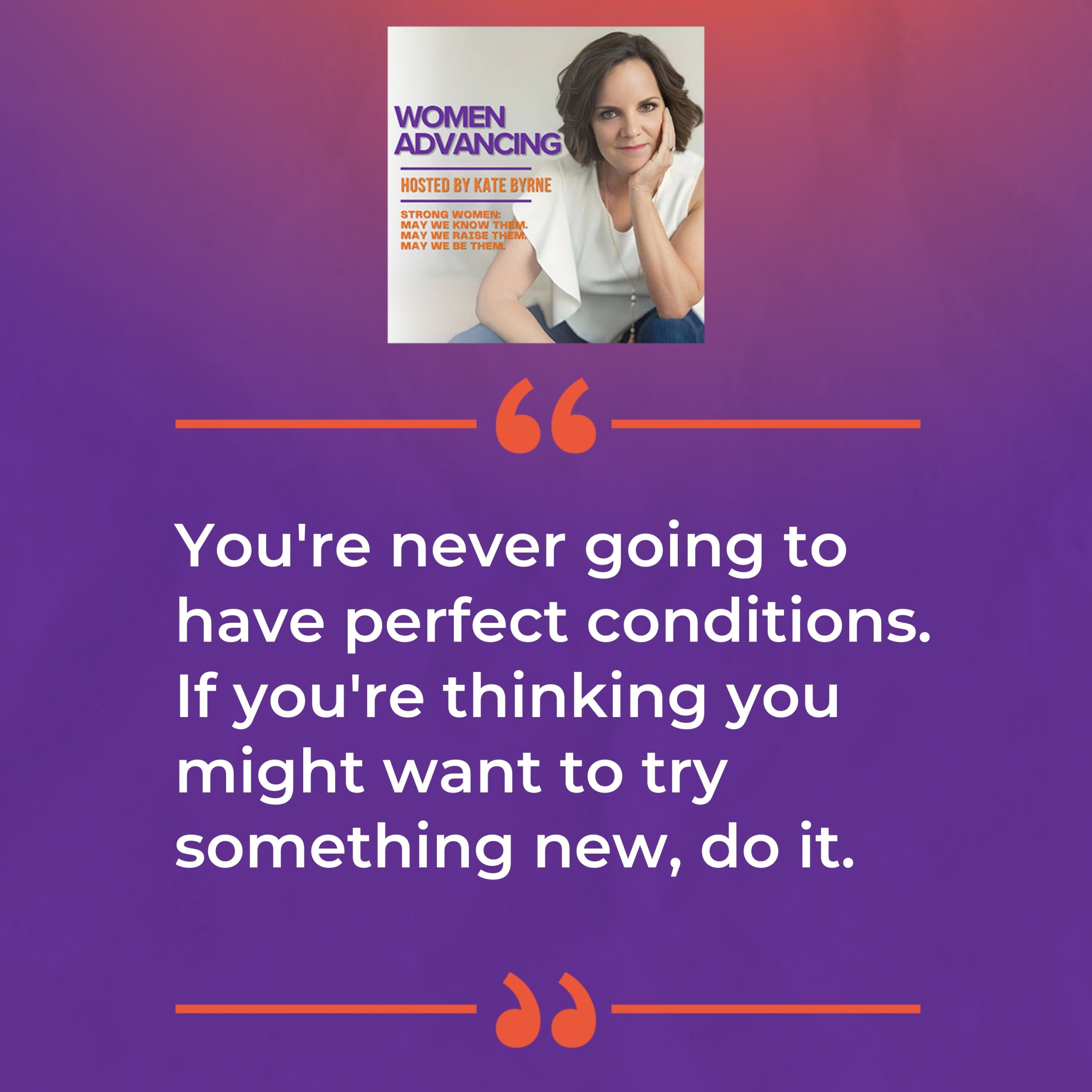
Second, if something isn’t working, let it go. This is something we all do. It’s so much easier said than done. Why? It’s because you get drained. When you’re working in a work environment where your values are not those of the company, it’s scary to do. In the long run, rather than depleting yourself, it’s time to start looking for something new. There are better fits out there. Nothing is more draining than working half-heartedly, for sure.
Finally, stop worrying about the future. Focus on the now. I know this is another one that everybody says, but it bears repeating. It’s so easy to future-trip. Try to stop, take a breath, and focus on where you are right this minute. Perhaps that’s also a sign that you need to take a sec. Even if it’s a five-minute little interspersed injection of you time throughout the day, you’ll be amazed at the impact that makes.
We can learn a lot more from both Maryam and Candice at their upcoming burnout retreat, which is going to take place in April 2026, out in Marble Falls, Texas, at the retreat center. There will be lots of interesting and fascinating activities that will leave you permanently shifted. With that, thank you, as always, for tuning in. Let me know what you thought. Let me know what other subjects you’d like to cover, and I’ll see what I can do to find someone who can share what they’re working on. With that, thanks so much. I appreciate you. Until our next conversation.
Important Links
About Maryam Sharifzadeh
 I often find myself unwell, even as a wellness practitioner and the owner of a well-being company, more often than I care to admit. The stress of running a business, managing large teams with diverse personalities, and staying relevant in an unforgiving market slowly erodes my resilience. Work comes first, making my well-being an afterthought. If I’m not proactive, I burn out. Work-life balance can feel as elusive as enlightenment.
I often find myself unwell, even as a wellness practitioner and the owner of a well-being company, more often than I care to admit. The stress of running a business, managing large teams with diverse personalities, and staying relevant in an unforgiving market slowly erodes my resilience. Work comes first, making my well-being an afterthought. If I’m not proactive, I burn out. Work-life balance can feel as elusive as enlightenment.
I was put to the test when my childhood sister passed away in a plane crash. Horrifying scenes that I once saw only in movies and on the news were now unfolding in my personal life. The incident shattered my reality and any space for well-being. In that moment, I faced a choice: completely unravel or channel my grief into something meaningful. I choose to double down on my well-being practices and rebuild a reality where my health is a top priority, regardless of what life throws my way.
As my personal well-being improves, so does my work. Candice and I met in 2019 and co-created a thriving wellness program for employees in the tech industry. Our collaboration sparks the idea of a Burnout Retreat, where our complementary skill sets, expertise, and lived experiences can support you.
About Dr. Candice Balluru
 I have walked the walk of burnout several times myself – as a health care provider and as a corporate professional. After so many cycles of burnout, I found myself leaning into the psychology of it all. Why does this keep happening? How is this so common but yet treating and even describing burnout can be challenging? I began reviewing the science of burnout, and also practicing new interventions at the individual and organizational levels, as both a therapist and an organizational consultant.
I have walked the walk of burnout several times myself – as a health care provider and as a corporate professional. After so many cycles of burnout, I found myself leaning into the psychology of it all. Why does this keep happening? How is this so common but yet treating and even describing burnout can be challenging? I began reviewing the science of burnout, and also practicing new interventions at the individual and organizational levels, as both a therapist and an organizational consultant.
In 2024, I became a new mom, which challenged every previous tool I crafted for combating burnout, and I learned even more about burnout by adding this new facet to my identity. Today, I continue to work with individuals in therapy and coaching to decrease burnout and increase life satisfaction, as well as with organizations to improve working conditions and reduce stress that leads to burnout. In this retreat, I am excited to offer an intensive experience that helps you lean into designing your life without burnout.
Maryam and I have collaborated in the past to deliver comprehensive and complementary wellness programming in the tech sector, and we were inspired by the opportunity to reunite outside of the workplace to speak with you directly in a magical and intensive environment, leveraging our combined experience and technical expertise. Part of the magic will include working with horses, which I have enjoyed doing so much in my clinical and coaching work. Horses have a unique ability to reflect to us what we need to see.
